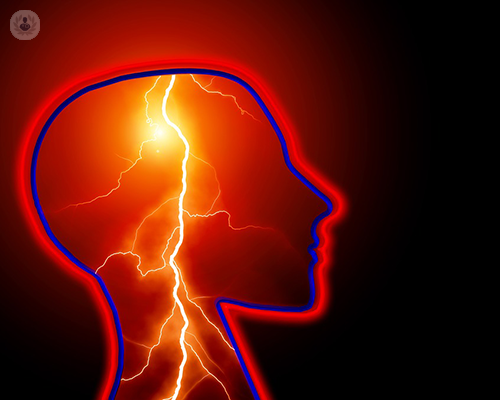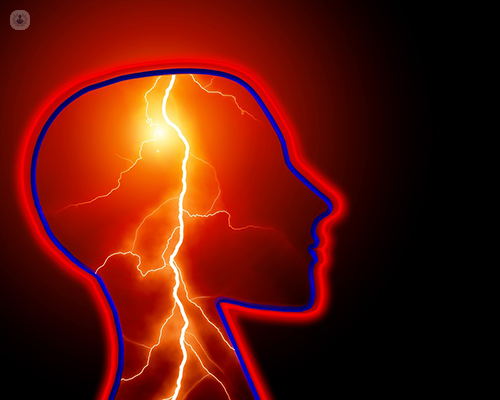
Neuralgia: types, symptoms, causes, and treatments
Neuralgia is characterised by burning, stabbing, and often severe pain due to irritated or damaged nerves.
The most common form is trigeminal neuralgia, which affects the trigeminal nerve Its incidence increases with age, and it affects more women than men.
Trigeminal neuralgia is often confused with headaches such as migraines or tension headaches, which are completely different. Trigeminal neuralgia pain occurs in the face.

What are the symptoms?
The main symptom of neuralgia is an intense stabbing pain or pain similar to an electric shock, lasting from a few seconds to two minutes, usually in areas where one or more nerve branches are located
Trigeminal neuralgia usually affects the second or third of the three trigeminal nerve branches, which causes neuralgic pain in the nasal and upper jaw areas, or the jaw, although sometimes can manifest in several places.
The pain may appear spontaneously, or may be triggered by tactile stimuli such as cold, heat, chewing, etc., in certain areas called "trigger zones".
Typically, a patient with neuralgia tries not to talk or chew, touch their face, or brush their teeth to avoid pain.
Types of neuralgia
Depending on the cause, neuralgia may be primary (cause unknown) or secondary (due to tumours, aneurysms, arteriovenous malformations, trauma, alcohol, diabetes, infections, inflammatory causes, etc.)
The most frequent types are cranial neuralgias:
- trigeminal neuralgia - affects the trigeminal nerve and causes neuralgic pain in the face.
- glossopharyngeal neuralgia - affects the glossopharyngeal nerve (or ninth cranial nerve) and causes severe pain in the throat, tonsils, back of the tongue and ear.
- occipital neuralgia - affects the occipital nerve and causes neuralgic pain in the neck, back of the head and behind the eyes.
Post-herpetic neuralgia is a complication of shingles, and can affect any nerve trunk of the body
What causes neuralgia?
The primary forms of neuralgia do not have any structural issues of the nerve associated with them and have no apparent cause.
Secondary neuralgias are due to the existence of a lesion that invades or compresses the nerve, such as a tumour, vascular malformations, demyelinating diseases (e.g. multiple sclerosis), infectious diseases (such as that caused by herpes zoster virus) or others.
In the case of trigeminal neuralgia, it has been observed that in many patients who have been surgically treated for supposedly primary neuralgia, there were actually blood vessels that were compressing the trigeminal root.
How is neuralgia treated?
In the case of secondary neuralgias, the solution is to treat the cause of the neuralgia (resection of tumours, aneurysms, treat infections, etc.)
If it is a primary, or idiopathic neuralgia, the treatment of choice is pharmacological. The most used and effective drugs are antiepileptics.
Sometimes there are cases of primary neuralgia that do not respond to drugs, in which case a surgical treatment is advised to free the nerve of possible vascular compressions, or to mend the fibres that lead to pain.
The most commonly used treatments for trigeminal neuralgia are: thermocoagulation, balloon compression, microvascular trigeminal root decompression, gamma-knife radiosurgery, trigeminal root section, and peripheral neurolysis.
Sometimes both types of treatment, medical and surgical, are necessary

